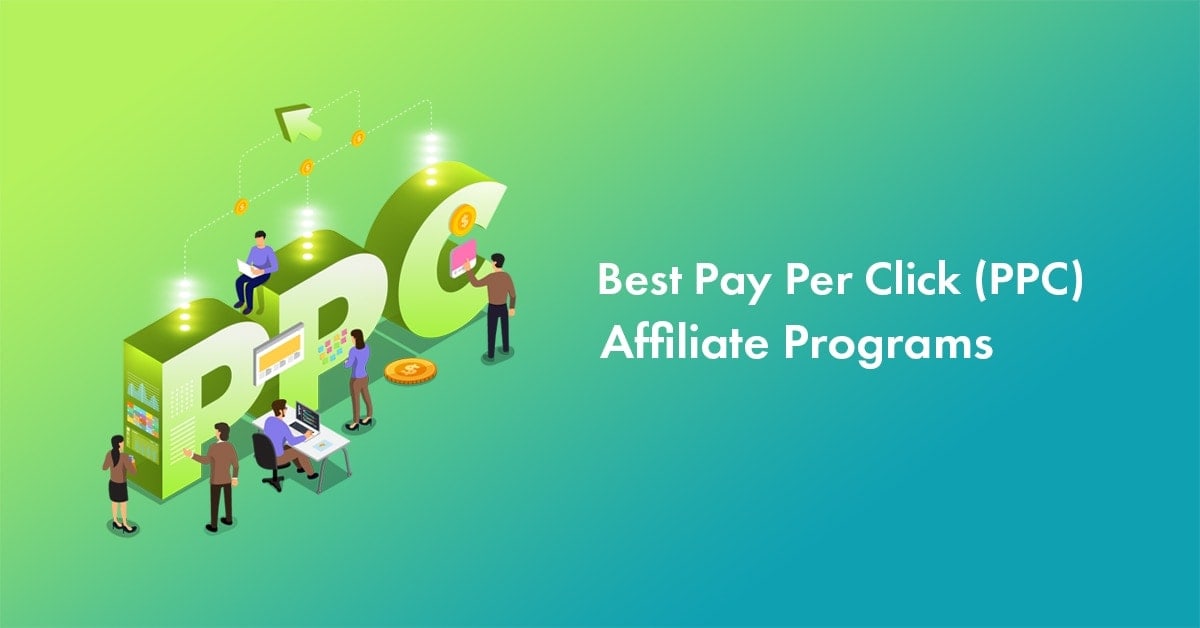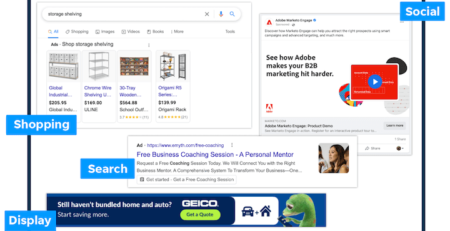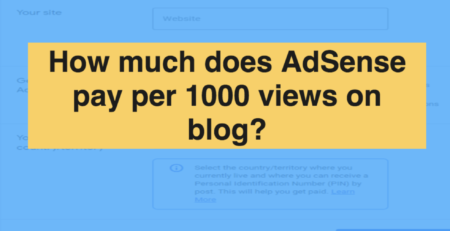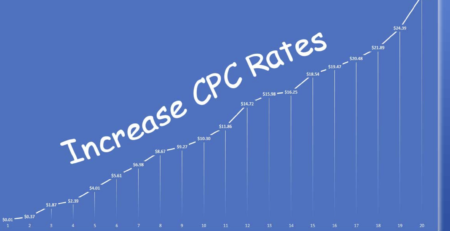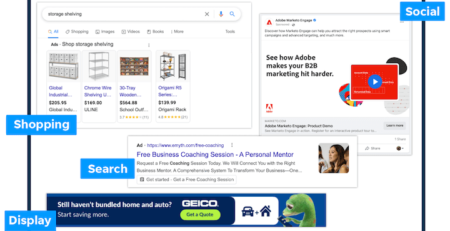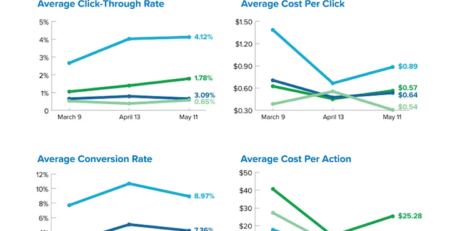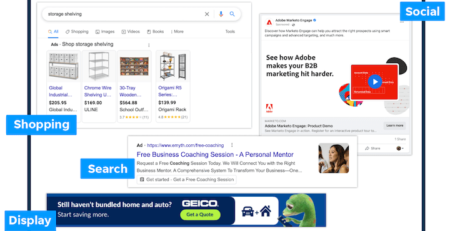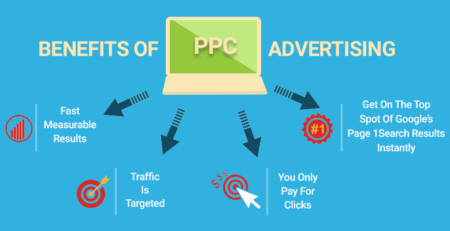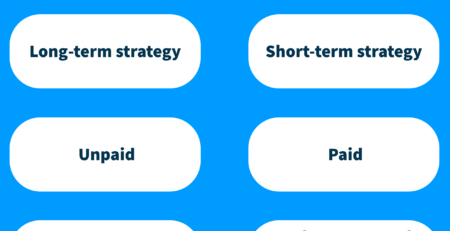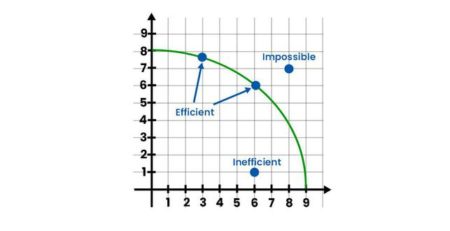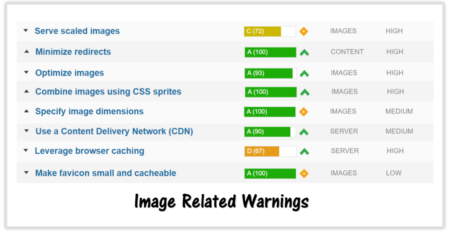How To Make Money With Ppc Affiliate Marketing?
Looking to make some extra cash through affiliate marketing? Want to know how to make money with PPC (Pay-Per-Click) affiliate marketing? Well, you’ve come to the right place! In this article, we’ll explore the exciting world of PPC affiliate marketing and show you how to turn your clicks into cash. So, buckle up and let’s dive in!
Now, you might be wondering, what exactly is PPC affiliate marketing? It’s a clever way to earn money by promoting products or services on your website or social media platforms. Every time someone clicks on your affiliate link and makes a purchase, you earn a commission. It’s like getting rewarded for being a virtual salesperson!
The beauty of PPC affiliate marketing is that you don’t need to create your own products or worry about customer service. All you need is your website, some captivating content, and a sprinkle of marketing magic. So, get ready to learn the secrets of PPC affiliate marketing and start making money in no time!
- 1. Choose a niche and select profitable affiliate offers.
- 2. Set up a website or landing page to promote the offers.
- 3. Conduct keyword research to find high-traffic, low-competition keywords.
- 4. Create engaging content and optimize it with relevant keywords.
- 5. Set up PPC campaigns on platforms like Google Ads, Bing Ads, or Facebook Ads.
- 6. Monitor and analyze the performance of your PPC campaigns, making adjustments as needed.
- 7. Continuously optimize your website and PPC campaigns to maximize your earnings.
How to Make Money With PPC Affiliate Marketing: A Beginner’s Guide
PPC affiliate marketing is a popular way to generate passive income online. It involves promoting products or services through pay-per-click advertising and earning a commission for each valid click or conversion. If you’re looking to monetize your website or blog, PPC affiliate marketing can be a lucrative opportunity. In this article, we’ll explore the fundamental strategies and tips to help you succeed in this field.
Understanding PPC Affiliate Marketing
PPC affiliate marketing is a performance-based marketing model where affiliates earn a commission for driving traffic or sales to the advertiser’s website. With PPC (pay-per-click) advertising, affiliates are paid for each click their promotional links or ads receive. This method allows affiliates to leverage contextual and targeted advertising to reach potential customers and earn money.
To get started with PPC affiliate marketing, the first step is to join an affiliate program. Choose reputable affiliate networks like Amazon Associates, Commission Junction, or ShareASale that offer a wide range of products and reliable tracking systems. Once you’ve joined a program, you’ll get access to unique affiliate links or banners that you can place on your website or blog.
Building a Strong Affiliate Website
To successfully make money with PPC affiliate marketing, it’s crucial to have a well-designed website that attracts and engages visitors. Here are three key steps to build a strong affiliate website:
1. Choose a niche: Select a specific niche that aligns with your interests, expertise, and target audience. This will allow you to create high-quality content that resonates with your visitors and builds trust.
2. Create valuable content: Producing valuable and informative content is essential in attracting organic traffic and establishing credibility. Write blog posts, reviews, and tutorials that help your audience make informed decisions and solve their problems.
3. Optimize for SEO: Implement effective search engine optimization (SEO) strategies to improve your website’s visibility in search engines. Research keywords related to your niche and incorporate them naturally into your content, meta tags, headings, and URLs.
Driving Targeted Traffic
To maximize your earnings with PPC affiliate marketing, it’s crucial to drive targeted traffic to your website or landing pages. Here are three effective strategies to attract the right audience:
1. Run PPC campaigns: Utilize PPC advertising platforms like Google Ads or Bing Ads to target specific keywords, demographics, and locations. Create compelling ads that entice users to click on your affiliate links.
2. Leverage social media: Utilize the power of social media platforms like Facebook, Instagram, and Twitter to promote your affiliate products. Create engaging content, run contests or giveaways, and interact with your audience to build a loyal following.
3. Develop an email list: Build an email list by offering valuable content upgrades, newsletters, or free incentives. Nurture your subscribers by sending regular emails with product recommendations, promotions, and helpful tips.
Choosing the Right PPC Affiliate Programs
Not all affiliate programs are created equal, and choosing the right ones can significantly impact your success in PPC affiliate marketing. Consider these factors when selecting affiliate programs:
1. Reputable merchants: Partner with established and reputable merchants that offer high-quality products or services. Research the merchant’s reputation, customer reviews, and their affiliate program terms.
2. Competitive commissions: Look for programs that offer competitive commission rates. Consider the average order value, conversion rates, and any additional incentives like performance bonuses.
3. Reliable tracking and reporting: Ensure that the affiliate program provides accurate tracking and reporting tools. This will help you monitor your campaign’s performance, optimize your strategies, and maximize your revenue.
By following these steps and continuously optimizing your PPC affiliate marketing campaigns, you can gradually increase your earnings and achieve financial success. Remember to stay up-to-date with industry trends, experiment with different strategies, and always provide value to your audience.
Advanced Strategies for PPC Affiliate Marketing: Increasing Conversions and Profit
Once you’ve established a strong foundation in PPC affiliate marketing, it’s time to explore advanced strategies to take your earnings to the next level. In this section, we’ll dive deeper into three key strategies for increasing conversions and maximizing your profit potential.
Creating compelling landing pages
A well-designed landing page is crucial for converting your PPC traffic into paying customers. Here are three essential elements to consider when creating compelling landing pages:
1. Clear and concise messaging: Clearly communicate the value proposition of the product or service you’re promoting. Use persuasive language and highlight the benefits your audience will gain from taking action.
2. Engaging visuals: Incorporate high-quality images, videos, or infographics to capture your visitors’ attention and keep them engaged on the page. Visual content can help reinforce the message and increase conversion rates.
3. Optimized call-to-action (CTA): Place a prominent and compelling CTA button on your landing page. Use action-oriented words, such as “Buy Now,” “Sign Up,” or “Start Your Free Trial,” to encourage visitors to take the desired action.
Split testing and optimization
Split testing, also known as A/B testing, is a powerful technique to optimize your PPC campaigns and landing pages. Here’s how you can effectively conduct split tests:
1. Identify variables: Choose the elements you want to test, such as headlines, images, CTAs, or color schemes. Make sure to test one variable at a time to accurately gauge its impact on conversions.
2. Create variations: Generate multiple versions of your landing page or ad, each with a slight variation in the selected variable. For example, you can test two different headlines or two different CTAs.
3. Track and analyze: Use tracking tools and analytics to measure the performance of each variation. Compare the conversion rates and engagement metrics to determine the most effective version.
4. Implement the winning version: Based on the test results, implement the winning version of your landing page or ad. Continuously monitor and test new variables to optimize your campaigns further.
Scaling and diversifying your campaigns
To maximize your profit in PPC affiliate marketing, it’s crucial to scale and diversify your campaigns. Here are three strategies to achieve this:
1. Expand your target audience: Research new demographics, locations, or interests that align with your niche. Extend your PPC campaigns to reach a broader audience and tap into new markets.
2. Explore different PPC platforms: While Google Ads is the most popular platform, consider expanding to other PPC advertising networks like Bing Ads, Facebook Ads, or LinkedIn Ads. Each platform has its unique audience and targeting options.
3. Test new products and niches: Continuously explore new affiliate programs, products, or niches to diversify your revenue streams. Stay updated with market trends and consumer demands to identify lucrative opportunities.
By implementing these advanced strategies, you can optimize your PPC affiliate marketing efforts, increase your conversions, and ultimately maximize your profit potential. Remember to continuously monitor and analyze your campaigns, adapt to changes in the industry, and always provide value to your audience.
Common Pitfalls and Tips for Success in PPC Affiliate Marketing
While PPC affiliate marketing offers an excellent opportunity to make money online, there are several common pitfalls that aspiring affiliates should be aware of. In this section, we’ll highlight three common pitfalls and provide tips for avoiding them to achieve success in PPC affiliate marketing.
Pitfall: Overlooking the importance of keyword research
Targeting the right keywords is crucial in PPC affiliate marketing. Failing to conduct thorough keyword research can result in wasted ad spend and low conversion rates. Here’s how to overcome this pitfall:
1. Research your audience: Understand your target audience’s needs, preferences, and pain points. Think about the keywords they would use when searching for products or services related to your niche.
2. Use keyword research tools: Utilize keyword research tools like Google Keyword Planner, SEMrush, or Ahrefs to discover relevant keywords and assess their search volume and competition.
3. Focus on long-tail keywords: Long-tail keywords are longer and more specific keyword phrases. They have less competition and often result in higher conversion rates. Incorporate long-tail keywords into your PPC campaigns to attract highly targeted traffic.
Pitfall: Neglecting ad copy optimization
Well-written and relevant ad copy can significantly impact the success of your PPC campaigns. Ignoring ad copy optimization can lead to low click-through rates (CTR) and wasted ad spend. Follow these tips to optimize your ad copy:
1. Create compelling headlines: Craft attention-grabbing headlines that incorporate your target keywords and highlight the key benefits of the product or service.
2. Use engaging language: Write ad copy that speaks directly to your audience. Consider their pain points, preferences, and aspirations, and use language that resonates with them.
3. Test different variations: Experiment with different ad copy variations to identify the most effective messaging. Test different headlines, body copy, CTAs, and emotional triggers to optimize your campaigns.
Pitfall: Lack of transparency and ethical practices
Maintaining transparency and ethical practices is crucial in building trust with your audience and long-term success in PPC affiliate marketing. To avoid this pitfall, consider the following:
1. Disclose affiliate relationships: Clearly disclose your affiliate relationships to your audience. This transparency builds trust and ensures compliance with relevant regulations.
2. Provide valuable content: Focus on creating high-quality and informative content that genuinely helps your audience. Avoid promoting low-quality products or engaging in deceptive marketing practices that may harm your reputation.
3. Foster genuine connections: Engage with your audience, respond to their comments and inquiries, and provide value beyond promoting affiliate products. Building genuine connections helps create a loyal following and increases the likelihood of conversions.
By being aware of these common pitfalls and implementing the provided tips, you can navigate the challenges of PPC affiliate marketing more effectively and increase your chances of long-term success.
In conclusion, PPC affiliate marketing has the potential to generate substantial passive income. By understanding the fundamentals of PPC affiliate marketing, building a strong affiliate website, driving targeted traffic, choosing the right affiliate programs, and implementing advanced strategies, you can increase your earnings and achieve financial success. However, it’s essential to stay informed, adapt to changes in the industry, and always prioritize providing value to your audience. Remember, success in PPC affiliate marketing requires patience, continuous optimization, and a commitment to ethical practices. So start exploring this exciting field and take advantage of the opportunities it offers to make money online.
Key Takeaways: How to Make Money With PPC Affiliate Marketing?
- Choose a niche that you are passionate about and has high demand.
- Research and select profitable affiliate programs to promote.
- Create compelling ad copy that targets your audience’s pain points.
- Optimize your landing page to maximize conversions.
- Track and analyze your PPC campaigns to refine your strategies.
Frequently Asked Questions
In this section, we’ll answer some common questions about making money with PPC affiliate marketing.
1. What is PPC affiliate marketing?
PPC affiliate marketing stands for Pay Per Click affiliate marketing. It is a type of online advertising model where affiliates earn a commission for each click their referral generates on an advertiser’s website. Affiliates drive traffic to the advertiser’s site through various online channels, such as search engines, social media, or display ads.
In PPC affiliate marketing, affiliates are not paid for the number of sales or actions that occur on the advertiser’s site, but rather for the clicks their referrals generate. It’s a performance-based model that rewards affiliates for driving high-quality traffic.
2. How can I get started with PPC affiliate marketing?
To get started with PPC affiliate marketing, you need to follow these steps:
– Choose a niche or industry that you are interested in or have knowledge about.
– Join an affiliate marketing network or program that offers PPC affiliate opportunities.
– Select relevant products or services to promote as an affiliate.
– Create content or advertising campaigns to drive traffic to the advertiser’s website.
– Track your clicks and conversions to measure your success and optimize your campaigns.
– Earn commissions based on the number of clicks generated by your referrals.
Remember, it’s essential to research and understand the rules and guidelines of the PPC affiliate program or network you join to ensure you comply with their terms and conditions.
3. Are there any costs associated with PPC affiliate marketing?
Yes, there can be costs associated with PPC affiliate marketing. Here are a few expenses you may encounter:
– Advertising costs: If you choose to run PPC ads, such as Google AdWords, Bing Ads, or social media ads, you will need to pay for the clicks or impressions on your ads. These costs can vary depending on the competitiveness of your chosen keywords or the targeting options you use.
– Website or landing page creation: To drive traffic and convert referrals, you may need to create a website or landing page. Building and maintaining a website may involve expenses such as domain registration, hosting fees, web design, and content creation.
– Tools and software: Some tools and software can help you optimize your PPC campaigns, track your clicks, and analyze your performance. These tools may come with a cost, so it’s important to factor them into your budget.
It’s crucial to plan your expenses carefully and assess the potential return on investment to ensure that the costs involved are reasonable and align with your earnings.
4. How much money can I make with PPC affiliate marketing?
The amount of money you can make with PPC affiliate marketing varies greatly depending on various factors:
– Commission rates: Different affiliate programs offer different commission rates. Some programs offer a fixed amount per click, while others provide a percentage of the advertiser’s earnings from the referred traffic. Higher commission rates generally mean more potential earnings.
– Traffic quality and quantity: The success of your PPC affiliate marketing efforts relies on driving high-quality traffic to the advertiser’s website. The more targeted and engaged your audience is, the higher the chances of earning more commissions. It’s important to focus on attracting the right audience to maximize your earnings.
– Niche and competition: Some niches or industries may be more profitable than others due to factors like demand, competition, and commission rates. Researching and selecting a profitable niche can significantly impact your earnings potential.
It’s important to note that PPC affiliate marketing is not a get-rich-quick scheme and requires effort, strategy, and continuous optimization to achieve substantial earnings.
5. How can I optimize my PPC affiliate marketing campaigns for better results?
To optimize your PPC affiliate marketing campaigns for improved results, consider the following strategies:
– Keyword research: Thoroughly research and select keywords that are relevant to the products or services you’re promoting. Use tools like Google Keyword Planner to identify high-converting keywords with reasonable competition levels.
– Ad copy and landing page optimization: Create compelling ad copy that entices users to click on your ads. Ensure that your landing pages are relevant, informative, and persuasive to increase conversions. Regularly test and make improvements based on user behavior and performance data.
– Targeting and segmentation: Use targeting options such as location, demographics, and interests to reach the right audience. Tailor your campaigns and messaging to specific segments for better engagement and conversion rates.
– Performance tracking and analysis: Monitor your campaign performance regularly and analyze the data to identify areas of improvement. Use tracking tools and metrics to measure your ROI, identify underperforming keywords or ads, and make data-driven adjustments.
By continually refining and optimizing your PPC affiliate marketing campaigns, you can increase your click-through rates, conversions, and ultimately, your earnings.
Top 5 Pay Per Click Affiliate Programs | Earn $1500+ Monthly With PPC Sites | Make Money Online
Summary
So, here’s what we learned about making money with PPC affiliate marketing. First, choose the right niche that interests you and has high demand. Next, find profitable affiliate programs that offer good commissions. Then, create a website or blog to promote your chosen products. Optimize your landing pages to attract visitors and encourage them to click on your affiliate links. Finally, use PPC advertising to drive targeted traffic to your site and increase your chances of earning commissions. With patience and perseverance, you can start making money with PPC affiliate marketing.
Remember, research is key to finding the right niche and profitable affiliate programs. Building a strong online presence and driving targeted traffic are essential for success. So get started, explore different opportunities, and don’t be afraid to learn from your experiences. Good luck on your journey to making money with PPC affiliate marketing!

